Whether you're selling homemade fashion products or cooking up your grandmother's old recipes, your business needs a consistent way to scale and be flexible enough to cope with modern times.
This is where Headless CMS comes into play. Website design and development firms have been talking about this emerging technology more and more over the past few years. And recently, the conversations have escalated noticeably, transcending the confines of virtual halls, as prospective entrepreneurs from a variety of commercial industries are contemplating the viability of going “Headless”. Headless CMS has now become a modern solution for fast business expansion.
We've provided a clear overview of the fundamentals below, along with some tech-oriented snippets for deeper comprehension. And after you've read through it all and gained more information, you’ll be able to decide for yourself if this is in fact a passing trend or the best digital solution for your business.
Checklist
The fundamentals of Headless CMS
Let’s start with the basics – What is a CMS? The term CMS or “Content Management System” refers to a tool for managing content. Simply put, a CMS makes management simpler. You’ve probably heard about it being used for websites, such as WordPress or Drupal. Knowing HTML is a minimum requirement for traditional website design and management in order to format content. However, with a CMS, anyone, regardless of their technical know-how, can update a website, add material, submit images, etc. The combined data is fed via PHP scripts to create HTML pages, that act as the system’s brain.

With that in mind, you may ask – How can a “Headless” CMS act as the “Brain” of a website? Let’s find out!
What is a Headless CMS?
By definition, Headless CMS is a content management system that only manages the back end and serves primarily as a content repository. Without a built-in front-end or presentation layer, a Headless CMS makes content accessible via an API for display on any device. But it is merely technical jargon. Simply said, a Headless CMS is one that enables users to create numerous unique content from a single piece of material.
A system for rendering content is already included with a CMS. This is commonly referred to as a theme that is frequently tied with the CMS’s primary implementation and has strong restrictions on how things can be done. As a result, your range of options is constrained. Going beyond this limit might require changing the fundamental structure of the CMS, which would reduce its maintainability. To counter this issue, developers frequently choose “Headless CMS” which totally separates the front-end from the back-end. This enables content extraction by developers, who can then create programs to convert the material into HTML for website visitors. They can also create software that transforms the content into other formats, such as emails, PDFs, or mobile applications. If you wish to create several distinct contents from the same material, a Headless CMS is the best option to build a mobile-friendly website.
The benefits of a Headless CMS to your business
Now that you know what a headless CMS is and how it differs from a typical CMS, let’s find out how it can add value to your business. Keep in mind that the business goals you are trying to achieve will ultimately determine the viability of going “Headless”.
For instance, if your business requires a website that has to be accessible in both English and Bangla, Headless CMS can save you both time and money. This is because, rather than building two websites, you can use a Headless CMS to achieve the same result with just a single website. The whole process becomes a lot simpler to accomplish than it would be to use the built-in theme creator.
With that in mind, let’s check out the advantages of a Headless CMS.
Content-first Design Approach
In recent times, distributed APIs that use web technologies have generated the most enthusiasm. One example of this trend in content management is the Headless CMS. Each Headless CMS has a distinct, well-defined API, allowing developers to concentrate more on content creation than content management. And in this digital era, content is the heart of your marketing.
Fulfilling Needs While Providing Functionality
As a business owner, your end goal is profit and profit requires visibility, expansion, and capability to beat the competition. Now let’s break down those requirements. For visibility, you need SEO (Search Engine Optimization) because you want to take care of navigation, redirects, and related responsibilities. You also want to add scripts for tracking your marketing scheme, usability reports, etc. Part of your capability is dependent on your ability to manage or schedule sales or events. To stay ahead of the competition, you’d also want to modify the structures of your landing page. In order to seamlessly and efficiently manage all of this on your website, you’d require previewing a selection of content pieces when editing. An integrated system with a mix of a content API and a display layer can do everything mentioned. But with Headless CMS, you can remove your dependency on installing third-party technologies and extra connectors.
This means that you are spending less behind your system while generating more content that can drive traffic to your business.
Remove Complexity, Increase Efficiency
It is only natural that interfaces to external systems made on the server as content management systems, have historically been server-side applications. Integrations are increasingly being moved to the client – the browser. This trend is not directly tied to whether you are utilizing a headless CMS platform or not, but since both are cutting-edge technology, they frequently appear together in the same projects. Therefore, integrating a Headless CMS is not only simpler but also more financially sound in the long term provided the appropriate skills and technology are applied. Headless CMS removes the complexity of future integrations while ensuring that you are both versatile and robust – something you want your precious business to be.
Reap the Benefits of a Versatile Technology
The display layer (API Consumer) is a tactical decision in a Headless CMS solution. The front-end implementation and templates are frequently thrown away when a typical CMS is deployed. However, for a Headless approach, you build what you need. Keep in mind that staying agile takes work. Digital products like a website or software are by nature bound to be obsolete sooner or later. However, if you can architect a system where the parts are replaceable, then you can divide complicated functions into reusable services that are independent of the display layer. By doing this, you will be able to profit from a Headless CMS over the course of several years of development. This is the key benefit of a Headless CMS, its versatility will allow your business to stay ahead of the curve without significant reinvestment.
Staying Safe in the Cyber World
You don’t need to be concerned about backend security issues affecting the front end because the content publishing platform isn’t linked to the CMS database. This means that your system has an inherent security shield that allows it to render most cyber security attacks useless. Remember, to a consumer who is using an online business, security is the most important factor since nobody wants their financial information to become public property. And with cyber security threats rising alongside the expansion of eCommerce, it is never a wrong idea to pick an option, Headless CMS, in this case, that is inherently secure.
Remove Complexity, Increase Efficiency
It is only natural that interfaces to external systems made on the server as content management systems, have historically been server-side applications. Integrations are increasingly being moved to the client – the browser. This trend is not directly tied to whether you are utilizing a headless CMS platform or not, but since both are cutting-edge technology, they frequently appear together in the same projects. Therefore, integrating a Headless CMS is not only simpler but also more financially sound in the long term provided the appropriate skills and technology are applied. Headless CMS removes the complexity of future integrations while ensuring that you are both versatile and robust – something you want your precious business to be.

Scale with Time
There won’t be any downtime during maintenance because the backend and frontend are kept apart. Your website can be upgraded or optimized without sacrificing performance. This may seem like a simple “Benefit” but remember, a customer will not sit around for your system to come online forever, especially since finding an alternative boils down to pressing a few keys.
Headless CMS is the Definition of Speed
Creators of content don’t have to worry about how their work will appear in various digital environments. This is so that any update that is pushed affects every digital platform. This implies that content can be reused and that content production is quicker. So with Headless CMS, not only are you getting a scalable, secure, and robust system, but you are also getting a system capable of pushing your content faster on multiple platforms than any of its competitors.
Which Headless CMS should you pick?
This is a contextual query because the response depends on your needs. Do you desire the best output? Do you desire more stringent user control? The list could go on forever. Products grouped under the broad category of “Headless CMS” are comparable in many ways and assist businesses of all sizes in resolving operational issues. However, depending on the type and size of the business, the amenities are different in terms of features, pricing, setup, and installation. So, in order to not be overwhelmed with the plethora of options out there, we will break down the products into two categories, Free and Paid, with the most popular products of each category being discussed.
Free Headless CMS

These are some of the most widely used tools with the greatest benefits to aid business. Depending on your needs, any of these options are capable of perfectly fulfilling your needs.
Strapi CMS
From small businesses to larger ones, Strapi is appropriate for all sizes. It is the most popular open-source headless CMS which is powered by JavaScript, highly scalable, and completely customizable. By giving developers the ability to utilize their preferred tools and a configurable API right out of the box, Strapi helps developers complete projects more quickly.

Ghost CMS
Turn your audience into a business – Ghost fully encompasses that tagline by being a powerful product for new media creators to publish, share, and grow a business around their content. It comes with modern tools to build a website, publish content, send newsletters & offer paid subscriptions to members.
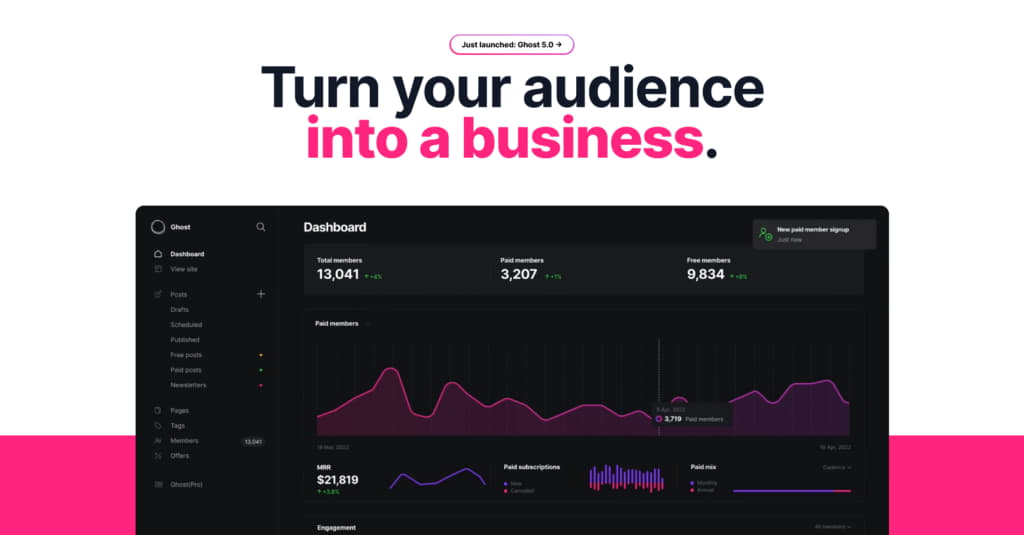
Directus CMS
Directus adopts a database-first strategy, storing all of the data unedited in wholly customizable pure SQL databases. Thus, portability, transparency, and great customization are provided while maintaining high security.
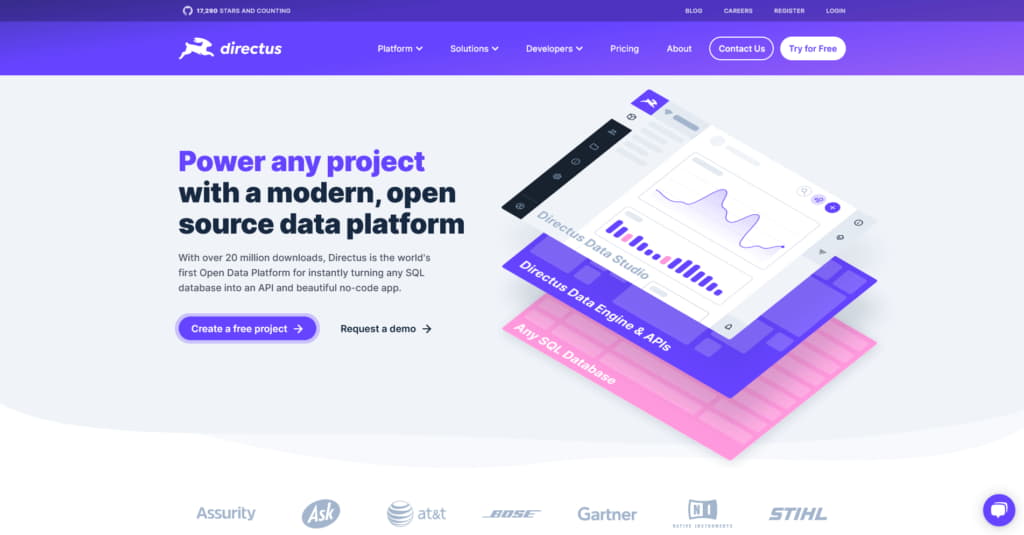
WordPress CMS
Being the most adaptable CMS, WordPress enables can enable you to build practically any kind of website. And since it is open-source, you can use it as a Headless CMS.
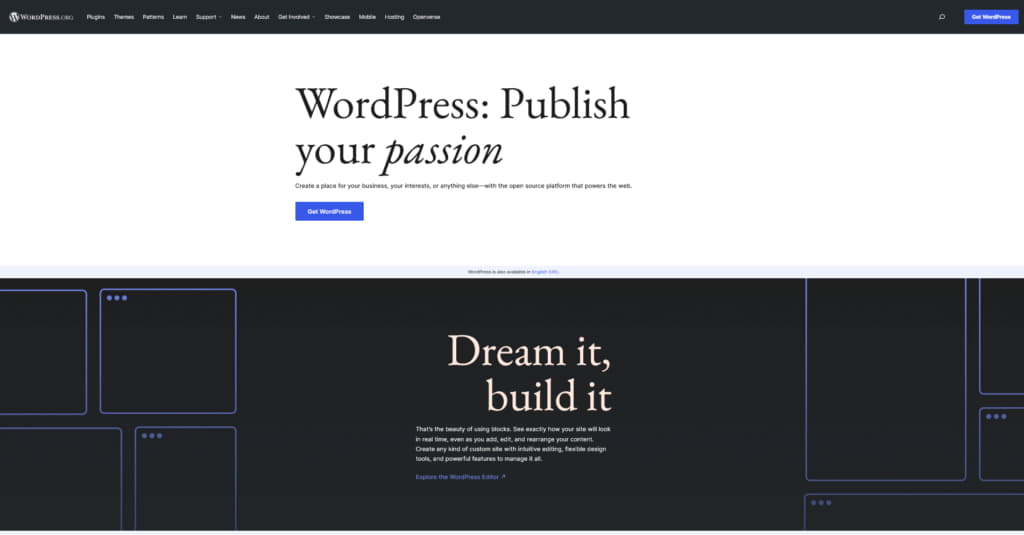
Drupal CMS
The REST API has been the backbone of the CMS ever since Drupal 8 was released in 2015. So, the CMS won’t be a hindrance to you any longer with a Drupal headless architecture. You have complete control over frontend framework flexibility, which makes Drupal a great option.
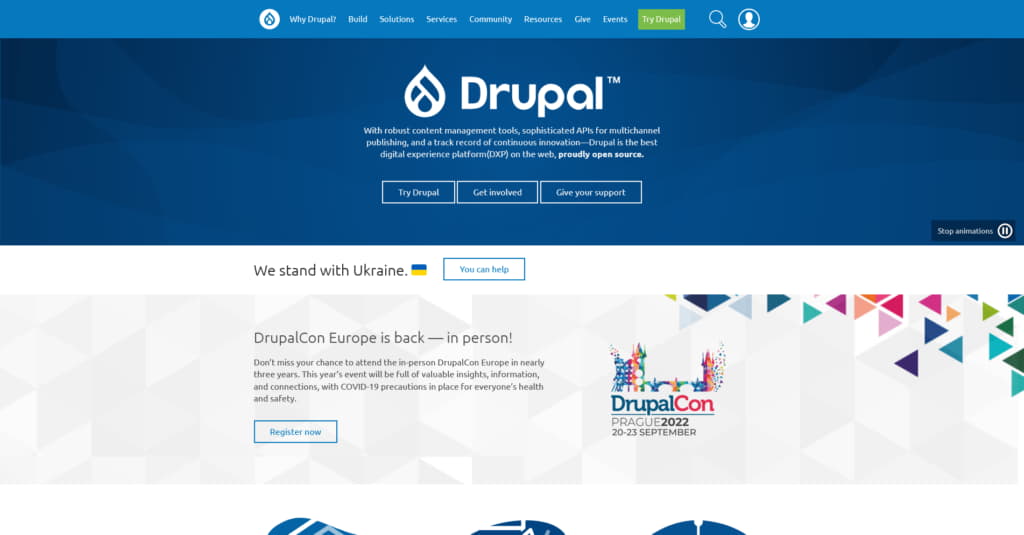
Paid Headless CMS

A Headless CMS provides you with total control over where and how your material is displayed. So picking any Headless CMS is a great option, but with the paid ones, you get access to niche functionalities.
Sanity CMS
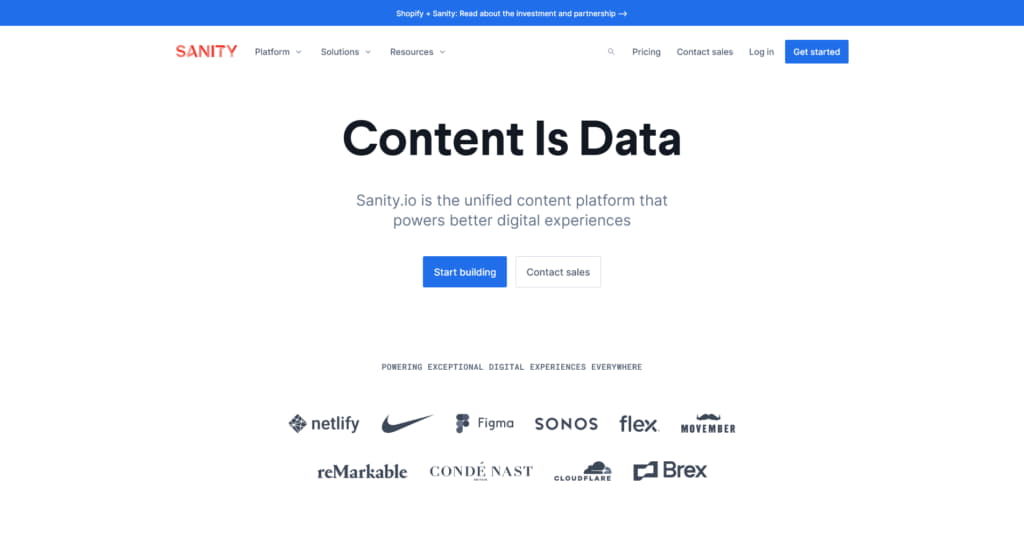
Organizations utilize Sanity to establish the best editing workflows and communicate content between systems, increasing digital velocity by treating content as data. Industry giants like Nike, Sonos, Cloudflare, National Geographic, Brex, Figma, and Netlify all trust it. perhaps even you!
Plasmic CMS

It is designed so that non-developers can quickly create new visual designs and content, while developers can readily incorporate these into any code base. Plasmic enables non-developers, such as marketers and designers, to build new websites quickly, iterate more, and deliver higher-quality products.
Umbraco Heartcore CMS
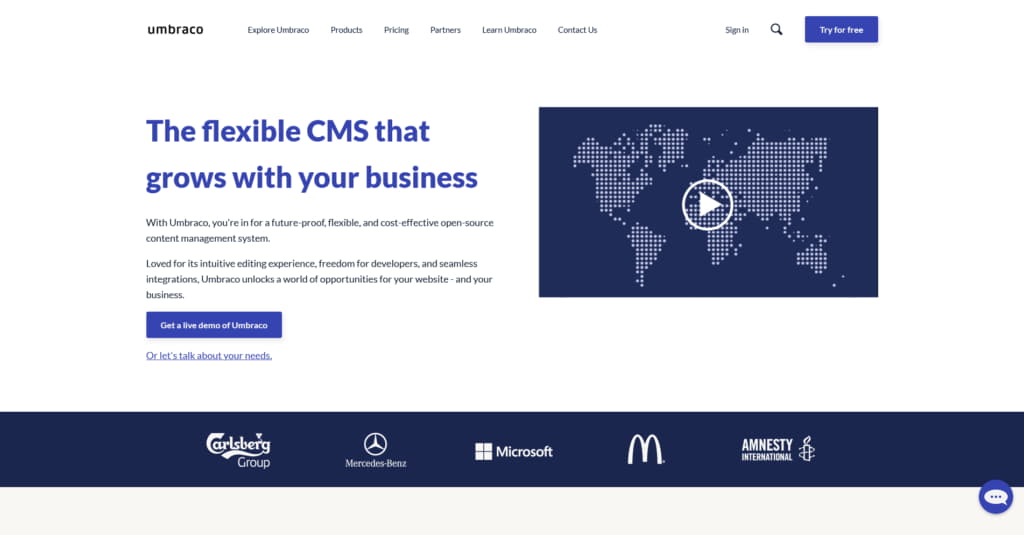
If you are a non-developer, you will find Umbraco Heartcore to be more helpful than others. It is based on an open-source CMS that manages more than 500,000 websites worldwide. For content querying, it includes managed REST APIs and GraphQL, as well as a fully serviced backend that is constantly maintained up to date for you.
Contentful CMS
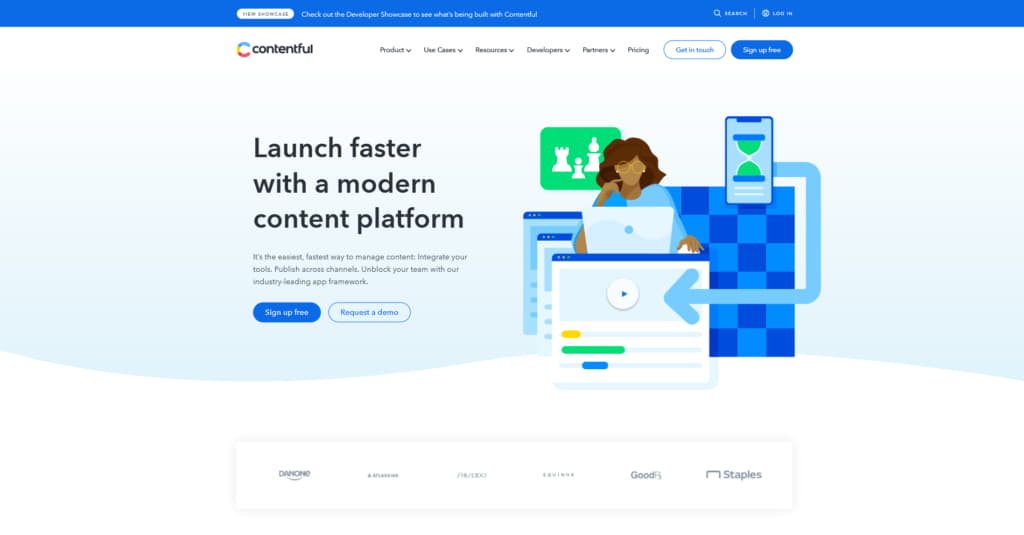
It is the leading content platform for digital builders. Digital teams can create content and deliver experiences more quickly with the aid of Contentful. Contentful is a fantastic choice for any organization since it provides a platform that adjusts to how digital builders work to fulfill corporate goals, is simple to customize, and has deep integration with any tech stack!
Butter CMS
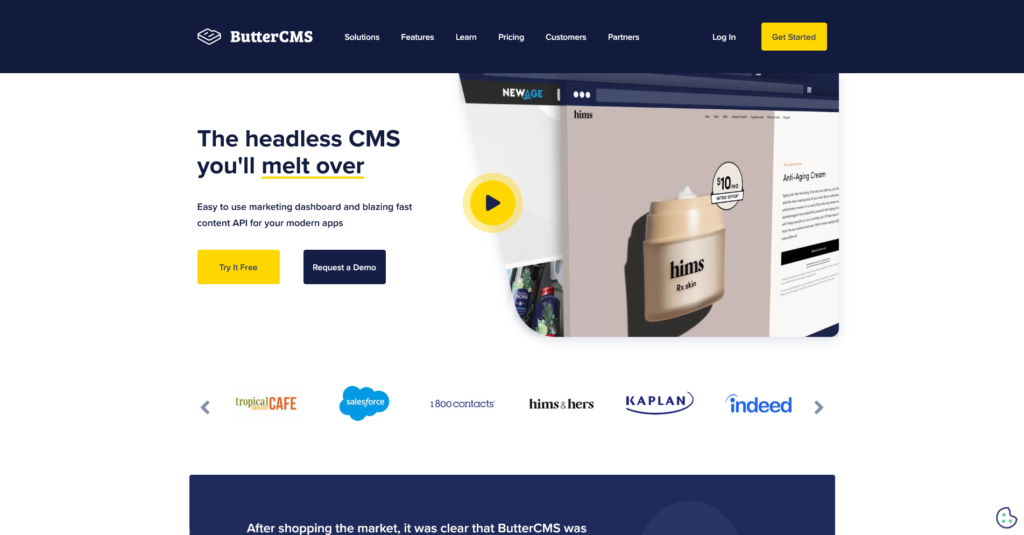
Developers and marketers adore the headless CMS platform called ButterCMS because it is API-first. Its versatility and compatibility with any tech stack make it one of the simplest Headless CMS to set up.
Business applications of Headless CMS - Let’s have a look!
Because the API gives mobile app developers the freedom to directly provide content to iOS or Android from the same backend, Headless CMS is more well-liked among them. A traditional CMS could be overkill and feature a ton of functionality that has nothing to do with what is needed. Because of this, even though Headless CMS might not be the first pick at the moment, it is quickly becoming one. So let’s look at some real-life use cases where Headless CMS is powering your favorite platforms.
- Spotify, one of the most common applications on everyone’s phone right now, used a Headless CMS to establish its platform as the market dominator. They are using Contentful for artists to assist them to advertise their music.
- Using a Headless CMS for media and publications, Discovery speeds up the process of content selection and publishes breaking news articles.
- To create a scalable and versatile website, Hopper combined Gatsby with Headless CMS.
- Chillys, the environmentally conscious insulated bottle manufacturer, opted to combine Shopify with DatoCMS, a Headless CMS. While the Headless CMS powers the content, Shopify manages the shopping cart.
- The website for Staples Canada is well-known for being a pretty strong example of an enterprise store using Shopify in a headless approach to enable additional complexity on the front-end. Their choice of Headless CMS is Bloomreach Experience Manager.
- With the help of Headless CMS, Wonderland created hundreds of aesthetically attractive websites that offered customers a simple and cost-effective platform for all of their requirements.
Summary
More solutions than ever are available now for a technological Headless CMS setup. Although it is not always the ideal option, the headless method may be a breath of fresh air for someone dealing with a heavy system whose technical service life is well past its best-before date.
Because there are so many choices, it may be challenging to make the best decision and simple to select an option that is not the best fit. For instance, headless CMS installation is ideal if you only distribute content across several channels and don’t need site maintenance. Depending on your business, you must question yourself if you want a non-technical individual to manage the general aesthetics of your website or if you’d want to design a more sophisticated user experience with the assistance of expert front-end developers.
A Headless CMS is the best option if you’re targeting a distinctive user experience across various digital platforms and more complicated functionality.
Frequently Asked Questions (FAQs)
Is a Headless CMS and a Decoupled CMS the same?
Although it is a fair assumption to make that a Headless CMS and a Decoupled CMS are the same, and it is to some extent, a Headless CMS is actually more of a subset of the decoupled system. It is possible to utilize traditional CMSs in a decoupled way. For example, WordPress.
What is the best use case of Headless CMS?
The simplest answer is if your current traditional CMS is not capable of growing your business, you need Headless CMS. It is perfect for those who need to scale quickly, have reasons to create personalized, interactive digital experiences, or simply want to streamline their business processes.
What is the “Best” Headless CMS?
This is a tricky question. Although most of the popular ones have similar features, there are certain niche capabilities that differentiate them. Based on your reason for using a Headless CMS, the answer can differ vastly. With that said, Strapi is the most widely used Headless CMS and a great place to get started.
Is Headless CMS a good option for eCommerce?
Definitely! Headless CMS is perfect for eCommerce because it allows the system to change quickly while maintaining its robustness, allowing the shop to keep up with its user’s needs. In fact, marketers and developers have more freedom to create and deliver content utilizing APIs for various devices since the frontend presentation layer and the backend are separated.
Is Headless CMS compatible with React?
Outsourcing custom development costs vary based on project complexity, location, expertise. Obtain quotes from multiple software companies.
When to outsource software development?
Sanity is the swiftest and most adaptable Headless React CMS that lets developers create their own content models in JavaScript and modify the editing interface with unique React.js components. It is the quickest and most adaptable method of managing and distributing content to digital products and devices.


